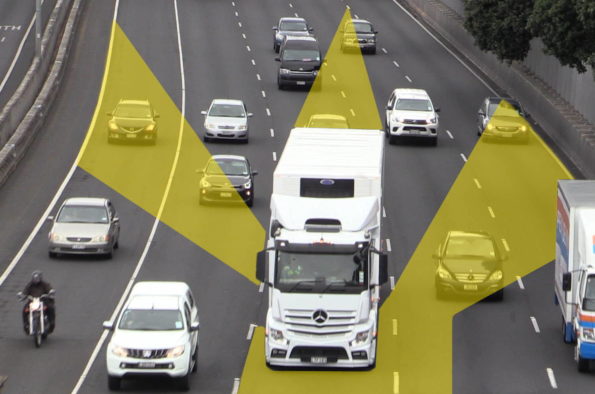An SUV weighs 2000kg and has four wheels in contact with the road. A typical prime mover and semitrailer could weigh 20 times that, but with only five times as many wheels in contact with the road. This difference in the total possible friction from braking is one of the reasons why trucks take much longer to stop – around 50% further.
An SUV travelling at 90km/h will stop in around 80-90 metres, including reaction time. 38m is the reaction distance while the braking itself is around 45m. In a truck, the reaction time is roughly the same (albeit that truck drivers often can see further ahead than car drivers and have more training to do so), but the actual braking distance is more like 80 metres.
Bleeding off all that kinetic energy without the benefit of the same levels of friction means that the tyres have to do more work; there’s only a certain amount of grip available on the road’s surface before the wheels skid.
If the surface is wet, this disparity is magnified.
How much does 10km/h change the braking distance?
If a second truck is travelling at 100km/h rather than 90km/h, by the time the first truck would have stopped, the second truck is still doing 50km/h and takes another 10-15 metres to stop.

What happens during an impact with a truck?
A truck has much more kinetic energy than a car when travelling, due to its weight. A car in a head-on collision with a truck stops immediately, usually being shunted backwards or to the side by the truck. The engine can be forced back into the cabin, usually resulting in leg injuries for the driver and passenger. The immediate stop by the car throws the driver and any passengers forwards. The air bags will take some of the force, but the seat belt can cause severe bruising and cracked or broken ribs. A broken rib can puncture a lung. In extreme circumstances the deceleration of the car is too much for the car’s occupants to physically cope with – inside the skull, the brain (which is quite soft) is slammed forward which can tear blood vessels and nerves, causing brain damage or death. Neck injuries can occur, too.
How can truck drivers improve braking distances?
Drivers should:
- ensure their tyres are at the correct pressure and have sufficient tread depth
- use engine braking and retarders to scrub off speed rather than the service brakes which should only be used in an emergency or to come to a complete stop; this preserves the brakes and helps prevent brake fade
- look as far ahead as possible in order to anticipate what might become a hazard
- brake early and gently
- keep a safe distance from the vehicle in front
How can car drivers help truck drivers avoid accidents
Car drivers should
- avoid pulling in front of a truck just before a braking zone (the truck has left that area for them to brake and now you’ve just halved it)
- avoid driving in a truck driver’s blind spots
- make sure that truck drivers can see their indication

